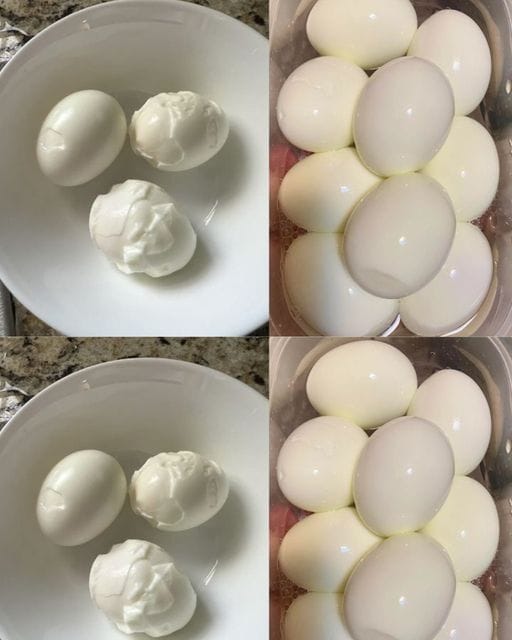
Peeling hard-boiled eggs can often be a frustrating task, with stubborn shells clinging to the egg white and resulting in a less-than-perfect appearance. However, with the right techniques and a bit of understanding about the science behind egg composition, you can achieve smooth, cleanly peeled eggs every time.
Understanding Egg Freshness and Its Impact on Peeling
The age of an egg plays a significant role in how easily it can be peeled after boiling. Fresh eggs have a lower pH level, causing the egg white to adhere more strongly to the inner shell membrane. As eggs age, the pH level increases, leading to a weaker bond between the egg white and the shell, which facilitates easier peeling. Therefore, using eggs that are a week or two old can make the peeling process more manageable.
Effective Techniques for Easy Peeling
- Baking Soda MethodAdding a teaspoon of baking soda to the boiling water increases the alkalinity, which helps the egg whites separate more easily from the shell. This method is simple and does not alter the taste of the eggs. Happy Egg
- Ice Bath Post-BoilingImmediately transferring boiled eggs into an ice bath shocks them, causing the egg whites to contract and pull away from the shell. This not only stops the cooking process, preventing overcooking, but also makes peeling easier. Happy Egg
- Pre-Boil Shell CrackGently tapping the egg to create a small crack before boiling allows water to seep between the shell and the egg white during cooking. This can help in loosening the shell, making it easier to peel once boiled. Happy Egg
- Shaking MethodAfter boiling, place the egg in a container with a bit of water, cover it, and shake gently. The motion helps to loosen and remove the shell. This method is popular for its efficiency and minimal mess. Happy Egg
Additional Tips for Perfectly Peeled Eggs
- Start with Boiling Water: Placing eggs into already boiling water can make them easier to peel compared to starting with cold water.
- Peel Under Running Water: Peeling eggs under running water can help separate the shell from the egg, as the water flows between the membrane and the egg white.
- Use a Spoon: After cracking the shell, sliding a spoon between the shell and the egg can help remove the shell in larger pieces, reducing the risk of damaging the egg white.
Conclusion
Achieving perfectly peeled hard-boiled eggs is a combination of using slightly older eggs and employing effective peeling techniques. By understanding the science behind egg composition and applying these methods, you can enjoy smooth, aesthetically pleasing hard-boiled eggs every time.



